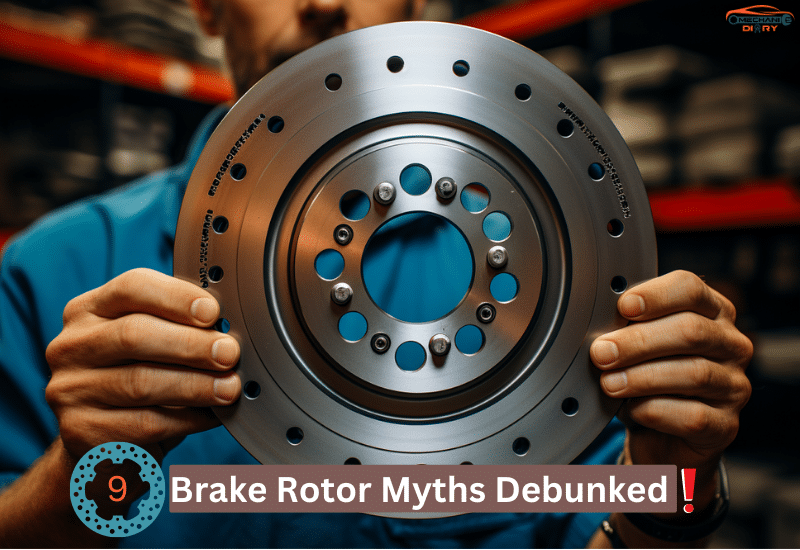
The brakes are the most essential system in your car. After all, going forward is important, but stopping safely is even more so.
At its most basic form, the braking system is relatively simple and has existed virtually unchanged for decades. Yet, to most people, the intricacies of how the car slows down are sometimes lost, and understandably so.
As with most things we don’t fully understand, a lot of myths and half-truths have developed around the braking system.
In this article, we will tear down the nine major brake myths, focusing on the key element of disc brakes: the brake rotor. After knowing the truth behind how brakes work, we hope you can better diagnose and repair brake system problems.
1. Warped brake rotors
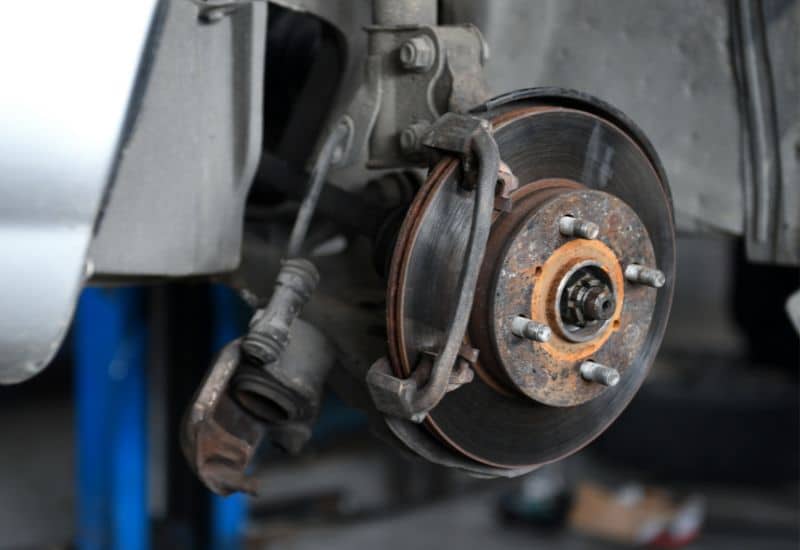
This is the number-one braking myth. Perhaps it has become so ubiquitous because, at first, it appears to make sense.
If you feel steering wheel vibrations or pedal pulsations when braking, then the disc’s surface must be uneven because it is “warped” from excessive temperatures, right?
Not really.
Cast iron brake discs are molded at very high temperatures.
To warp it would require bringing it back up to a similar temperature, which is extremely unlikely to happen during braking, even on the track.
What’s actually happening, then? The simple answer is uneven deposits of friction material across the rotor surface. The complex answer requires understanding the concepts of rotor runout and disc thickness variation (DTV).
Runout is a measurement of the lateral movement of the rotor as it rotates when viewed from the front of the vehicle. Excessive lug-nut tightening or rust between the hub and rotor surfaces can cause the rotor to “wobble,” resulting in runout.
Brake disc thickness variation or DTV is a measure of how the thickness of the rotor changes across its surface. When you press the brake pedal, the brake pads are pressed against the discs.
Whenever this contact happens, the brake pads deposit a tiny layer of friction material over the rotor’s surface.
This “coating” of friction material over the rotor improves braking performance, as the coefficient of friction is higher than if the pads were to contact the bare metallic surface of the disc itself. This phenomenon is known as adherent friction.
In a perfect world, the contact between the face of the disc and the brake pads is completely even, creating a uniform “transfer layer” of friction material over the disc. The problem starts when the application of the brakes isn’t smooth and even.
This can happen, for example, if the calipers are sticking or if there’s a runout of the brake rotor. As the high and low spots on the rotor scrape against the pads, they create uneven friction material deposits, which cause the disc to appear thicker in some areas over others.
Another precursor to brake DTV is brake pad imprinting. Imagine you just coasted down a large hill with red-hot brakes, and once you reach the bottom, you stop at a red light with your foot still on the pedal.
As the brakes are hot, friction material continues to deposit over the same spot on the rotor, leaving an imprint of the brake pad on the disc, which is sometimes noticeable to the naked eye. That’s why you should avoid leaving the pedal depressed when the brakes are hot.
As a technician then measures different values across the disc using a micrometer or a dial gauge on a brake lathe, it appears that the disc is warped – thus giving origin to this whole myth. So now you know.
The next time you are about to talk about “warped” rotors, think about run-out and DTV instead. This will not only make you sound smarter than most experts, but it should also help introduce the correct terminology in the long run.
2. Bigger brakes will help you stop quicker
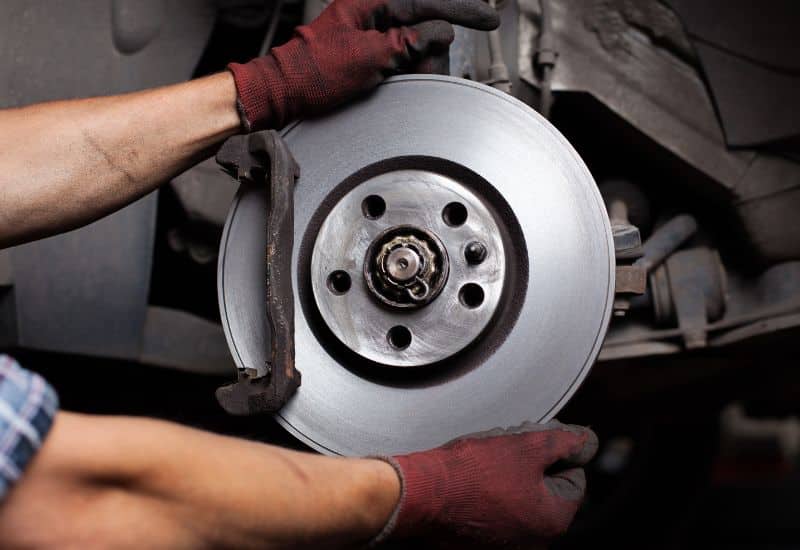
Brake rotors with a larger radius will increase the lever arm of the braking force over the center of the hub and, therefore, the braking torque applied to the wheel.
So, it would stand to reason that they would help you stop quicker. However, that is not necessarily the case.
If your brakes can lock up the wheels, which is the case in most passenger cars, then you are traction-limited.
That means that if the ABS on your vehicle is activating, the limiting factor to your braking distances is the coefficient of friction between the tires and the road surface, not braking torque. In this case, improving the grip of your tires will shorten your braking distances.
This can be accomplished by fitting better tires, upgrading the suspension, and so on. Fitting larger brakes will not help with this.
In fact, larger rotors could make braking more sensitive, causing the wheels to lock up more easily and the ABS to kick in sooner. They may also increase unsprung and rotating mass, which will harm the car’s overall handling.
What’s the point of bigger brakes, then?
Well, whenever you brake, you turn kinetic energy from the car’s motion into heat in the form of friction. As the brakes heat up from consecutive hard stops, they must also be able to release that stored thermal energy into the surrounding air.
If the brakes get too hot and are unable to release heat quickly enough, that leads to a phenomenon called brake fade. Essentially, the brakes “fade”, getting less efficient as they get hotter, leading to longer braking distances.
Larger rotors have higher heat capacity, which means they can store and release more heat. That will ultimately help to reduce brake fade.
So, while bigger brakes are certainly not useless, their true benefits are most likely to be felt only at the race track.
You may benefit from larger rotors if you frequently carry high loads down steep inclines, where you might overpower the stock brakes.
However, that is increasingly rare, as stock braking systems are dimensioned to cope with this. In reality, you probably won’t see any advantage in driving on the street in normal everyday life.
3. Drilled or slotted brake rotors are better
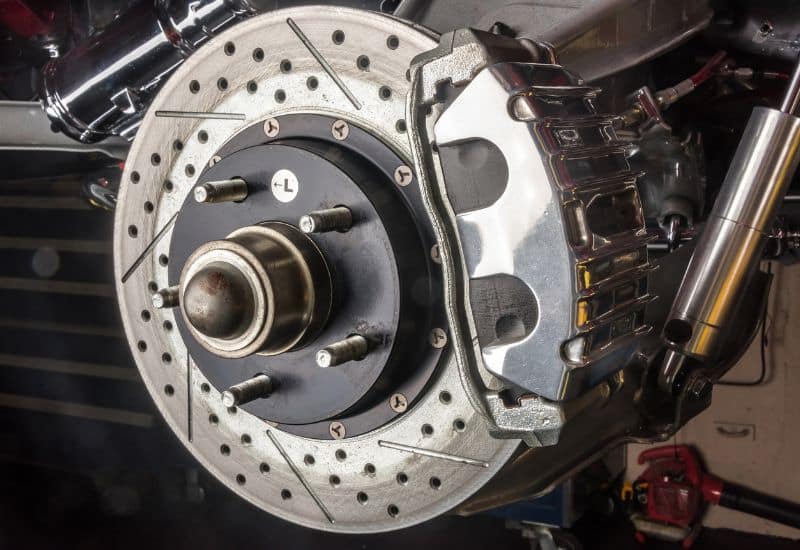
We’ve already seen that fitting bigger rotors does not necessarily make sense for a normal street-driven vehicle. What about cross-drilled or slotted rotors, then?
While they certainly look cool, like with bigger brakes, their real use on the street is limited, and they come with their own set of disadvantages.
Brake pads are made of a combination of metallic and/or ceramic friction material and bonding agents or resin. When you brake, you heat up the brake pads. Excessive heat can cause some of that resin to break down and turn into a gas.
This is known as the “outgassing” of the brake pads and is detrimental to braking performance, as the thin layer of gas prevents the pads from completely contacting the brake rotor.
Drilled brake rotors have “holes” machined across them, aiming to vent these gases by providing them a path to exit the rotor/pad contact surface.
Slotted rotors serve pretty much the same purpose but do so with slits carved along the rotor’s surface.
The holes and slots are claimed to have a marginal effect on cooling, but that’s not their main purpose. In fact, it’s debatable whether they actually improve things.
While they do increase the surface area exposed to airflow, they also reduce the surface area in direct contact with the brake pads (called swept area), reducing the effectiveness of the heat transfer by conduction away from the pads (and crucially, the brake fluid) and into the rotors.
Furthermore, the removed material from the holes and slots reduces the rotor’s thermal mass, decreasing its ability to hold and release heat.
Why aren’t they useful for street cars, then?
For starters, brake pad compounds have evolved over the years, and these days, “outgassing” is no longer a phenomenon most drivers will encounter in normal driving.
That eliminates the main reason cross-drilled and slotted rotors exist on the street. This leaves their application mostly based on aesthetics, although drivers still have to contend with their disadvantages.
Slotted rotors tend to result in higher brake pad wear, as the sharp edge from the slots shaves a small “slice” off the top of the brake pads with each brake application.
This process may help with initial brake “bite”, giving the impression of more responsive brakes on the street, which isn’t necessarily the case.
Cross-drilled rotors’ edges around the drillings create stress concentration areas, which are susceptible to developing cracks at high temperatures. These cracks can then spread over the rotor surface, causing it to fail prematurely.
That’s why racing teams tend to favor slotted rotors instead – they are stronger and provide the same outgassing benefits as drilled rotors while allowing for better brake bite and pad cleaning.
4. Disc brakes stop faster than drum brakes
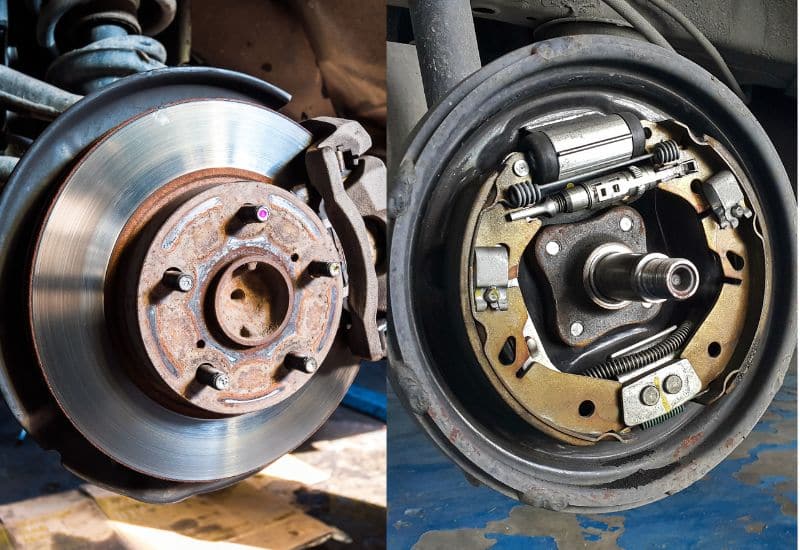
Fewer and fewer cars nowadays use drum brakes and those that do only use them on the rear wheels, where the braking forces are lower. You may think that’s to do with them being more complex or inherently worse at making the car stop, but that isn’t true.
As we’ve seen, braking distance has a lot more to do with tire/pavement friction than braking force. It’s perfectly possible to make drum brakes lock up the wheels; in fact, a little-known fact is that a drum brake provides more braking power than a disc brake of the same diameter. It’s also cheaper to produce and lasts longer.
The actual reason disc brakes have largely superseded drum brakes has to do with heat management.
We’ve already talked about heat build-up and brake fade. Disc brakes are much more efficient at dissipating heat, which makes them better suited to cope with increased demand from repeated stops or performance driving.
So, while brake drums can match rotors over a single stop, the rotors will retain their performance much better over several stops.
5. Water in the rotors will lead to longer braking distances
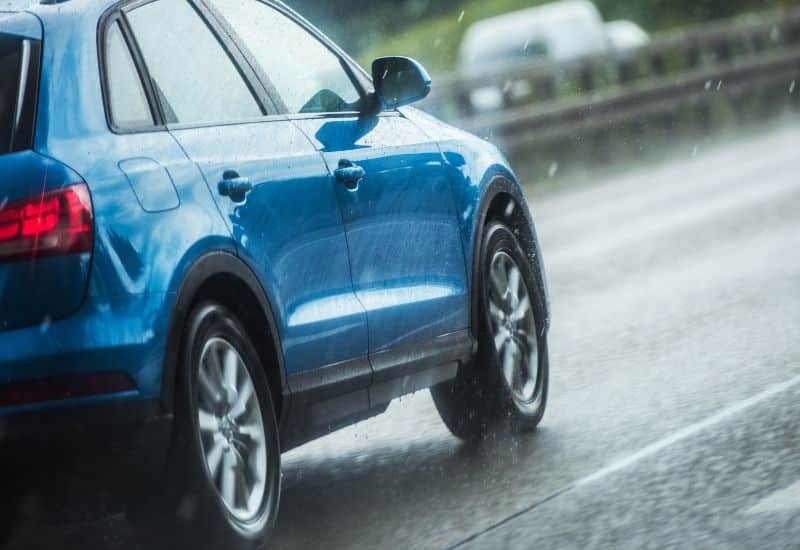
You might have been told to pump the brake pedal after driving through a puddle, as the water in the brakes will affect your stopping performance.
That made sense back in the day since water could actually pool up inside drum brakes. Nowadays, most cars use disc brakes on the front wheels. Any water on the surface of the rotors will be pushed out by centrifugal force and the car’s forward motion, so you don’t have to worry about it.
If your car has been sitting for a while, it is a good idea to gently hold your brakes while driving the first few yards, as a layer of rust can sometimes develop on the rotor surface.
This will allow the pads to clean up the rust and restore the grippy layer of friction material underneath.
Water can actually affect braking performance in a major way, but it has nothing to do with the rotors. Brake systems aren’t completely watertight, so that some humidity will find its way into the hydraulic fluid over time. What’s more, brake fluid is hygroscopic, which means it likes to absorb water.
Water has a much lower boiling point than brake fluid, so any moisture on the lines will affect the performance of the system. That’s why you should replace your brake fluid every one to two years.
6. You can brake harder as soon as you get new brakes
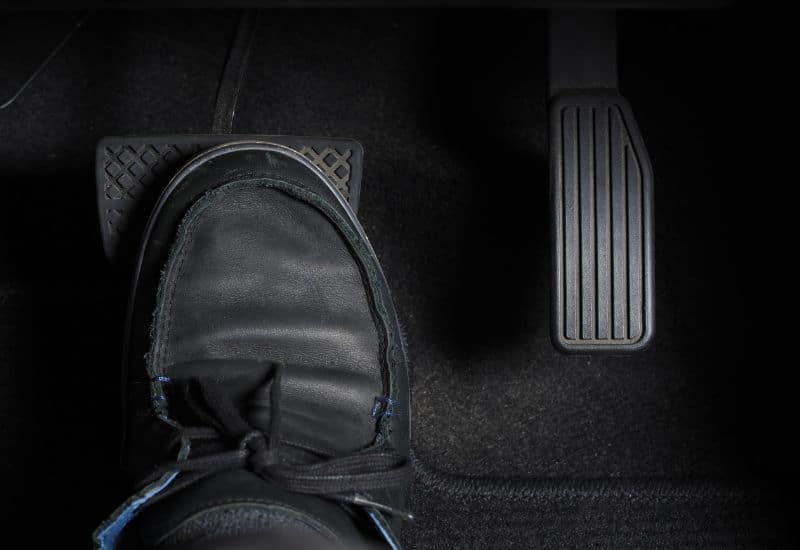
You may think you can drive normally when you get new brakes, but that is far from the truth. New rotors and pads need to go through the right bed-in process to work as they should, and the process actually starts before they are fitted to your car.
Back then, it was believed that new rotors had to be machined before being fitted, but that is no longer the case. New rotors now arrive fully machined and almost ready for installation, although some prep is still needed. New rotors usually come with a layer of anti-rust protective coating which needs to be sanded off before they are put in the car.
Then there’s the bed-in procedure itself. As we explored before in this article, the layer of friction material from the brake pads on the rotor surface is crucial to ensure the best braking performance.
The first few layers of this coating are extremely important, which puts great emphasis on bedding in the brakes correctly.
How exactly this is done often varies between manufacturers and brake pad compounds, but generally, you’ll have to heat cycle the pads. The process usually consists of making a few hard decelerations to heat the pads without stopping, then driving some distance at highway speeds to cool them back down. Rinse and repeat a certain number of times.
This will ensure the brake pad material deposits evenly across the discs, allowing for smoother brake operation and longer brake life. Find a clear stretch of empty highway to do this, and be mindful of your safety and others.
7. The minimum rotor thickness isn’t important
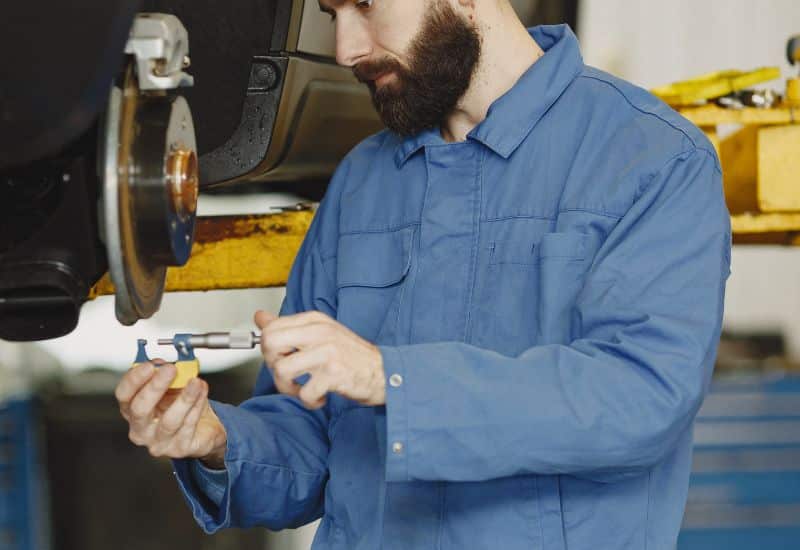
Although the brake pads are normally the main wear part in the braking system, the brake rotors also experience wear over time. You have probably heard that brake rotors have a minimum allowed thickness, but you might think that it doesn’t matter if you use them beyond that point.
Actually, it is a very important specification. A rotor that’s below the minimum thickness has significantly reduced thermal mass, making it much more susceptible to heat cracking.
The rotor thickness is also tied to brake caliper piston travel. When you activate the brakes, the hydraulic fluid pushes out a piston in the brake calipers located within each wheel. These pistons press the brake pads against the rotors. If the rotor is too thin, there’s a chance the pistons can be pushed too far out of their bores.
This can result in damage to the seals or extreme cases, brake fluid leaks, and brake failure. So, make sure to measure the brake rotor thickness properly using a micrometer and replace it as soon as it goes below the manufacturer’s recommendation.
8. You don’t need to replace brake hardware
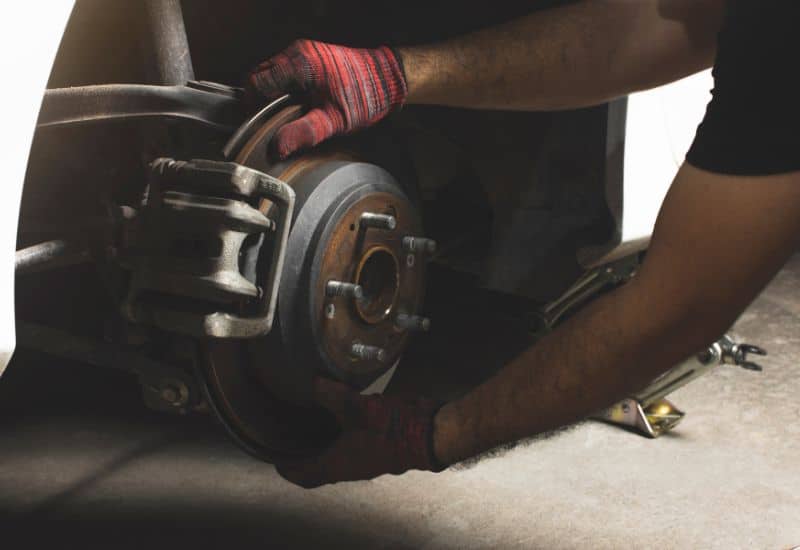
When replacing brakes, you may think you only need new rotors and pads. That isn’t exactly true. Some additional hardware like shims and anti-rattle springs are usually necessary and don’t always come in the box.
Most manufacturers will also require that you replace the caliper mounting screws, as those are designed to stretch when torqued down and can’t be reused. When doing a brake job, do your research beforehand to know what additional parts you will need so you aren’t left hanging.
9. Replacing brakes is a quick job

Have you ever taken your car in for a brake job and wondered why replacing brake rotors and pads takes so long?
With effect, an experienced technician can probably go through the simple motions of taking off a brake rotor and putting a new one in, blindfolded.
However, the brakes on your car are a very sensitive system, and brake maintenance is a much more involved process than simply swapping rotors, at least when done properly.
Take a minute to consider all the steps that need to be taken before the shiny new rotor goes into your car. First, the rotors’ surface must be prepared by sanding off the protective layer of anti-rust coating.
Then, everything has to be cleaned thoroughly with a wire brush: the hub-to-disc surface, which is critical to avoid runout; the caliper pins and brackets, essential so the calipers don’t seize up; the brake pad supports, so they don’t squeal; and so on.
Then, everything has to be carefully lubed up with high-temperature grease, paying attention so that none of it gets in the friction surfaces.
Finally, the brake fluid needs to be flushed and replaced by bleeding the brake calipers individually. To top it all off, a test drive is needed to bed in the new rotors and pads, as we’ve already explored in this article.
So, the next time you hit the brakes, take a moment to appreciate all the work that goes into ensuring the system works perfectly, your brake pedal stays firm, and your steering wheel remains free of any judder or oscillations so that you can stop safely and comfortably, again and again.

Written By
Victor Faeda
Victor is a Mechanical Engineer BSc and certified Automotive Mechatronics technician from Portugal. He worked as an intern mechanic for Volvo and has been fixing his own vehicles for over 10 years. Writing and cars are his passion, so now he combines the two by creating content around the automotive industry. He specializes in automotive technology and maintenance.
